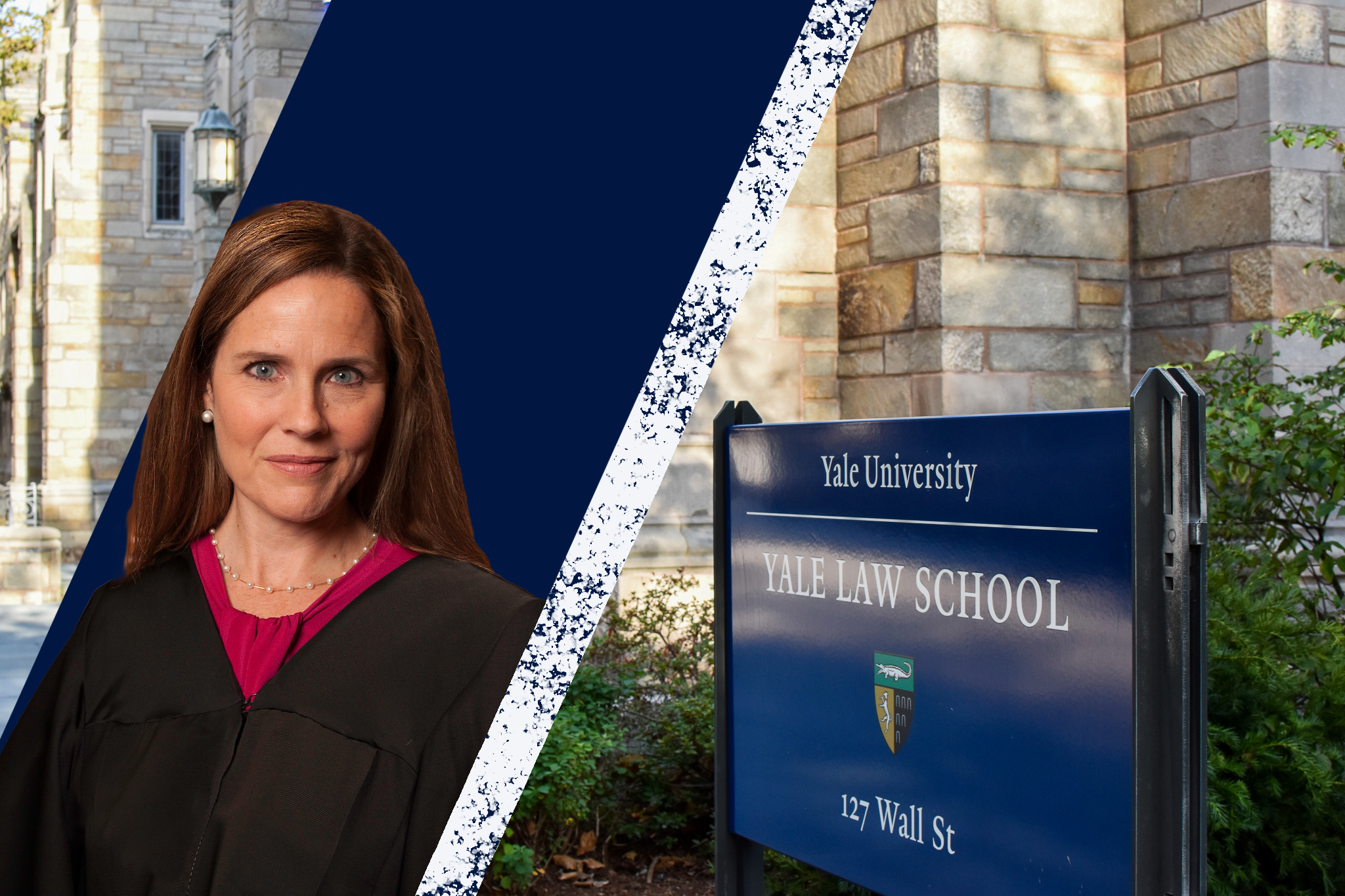
Wikimedia Commons and Karen Lin, Contributing Photographer
Supreme Court Justice Amy Coney Barrett was sworn in on Oct. 26. According to professors and legal experts from the Yale Law School, Barrett’s confirmation will change the dynamics of the court for the foreseeable future.
Yale Law School affiliates told the News that, given Barrett’s originalist interpretation of the Constitution and understanding of religious liberty, her confirmation will likely narrow individual liberties, rather than expand them. They said that the Supreme Court will likely move to the right on a number of issues, including abortion, affirmative action, marriage equality and public education. According to law professor Samuel Moyn, liberals should look out for “major setbacks” in these areas, as well as with regard to the constitutionality of the modern administrative state. Senior research scholar Linda Greenhouse LAW ’78 said much the same.
“There’s no mystery,” Greenhouse said. “She’s taken the place that was occupied by Justice [Ruth Bader] Ginsburg and her views on pretty much everything, from what we can tell, seem to be the opposite. The court has been pretty finely balanced in recent years, and her arrival means that the liberal side of the court has shrunk to three and the conservative side of the court has grown to six, so that’s where we are.”
Mindy Jane Roseman, director of the Law School’s Gruber Program for Global Justice and Women’s Rights, told the News that Barrett was nominated due to her youth — and therefore expected long tenure on the Court — and her support for originalism. She added that the rapid confirmation process “shattered” the established norms for confirmation hearings.
Roseman said that originalism, the theory that asserts that the Constitution must be interpreted based on the original understanding at the time which it was adopted, is a way to “cherry-pick historical ‘facts’” in an anachronistic way. With this understanding of the Constitution, as well as Barrett’s ideas of religious liberty, Roseman said to expect advances in the evangelical agenda against abortion, birth control, marriage equality, evolution and public education, among other issues.
“She will fit in right next to Alito and Thomas,” Roseman wrote in an email to the News.
Greenhouse said that there is a spectrum of conservatism on the Supreme Court, so the six conservative justices will not vote as a coherent bloc on every case they hear. Moyn similarly said that increasing the number of conservative justices from five to six only “marginally” affects the Supreme Court, which had a conservative majority before Barrett’s confirmation.
According to Moyn, Chief Justice John Roberts may lose his “centrality” as the swing justice now that Barrett has joined the Court. Greenhouse told the News that Roberts became the “median justice” after Justice Anthony Kennedy — who often cast the swing vote — retired in July 2018.
“So now that [Roberts] is going to have, let’s say, five to his right and three to his left, that leaves him not in a position of control,” Greenhouse said. “It raises the question, will anybody be in a position of control?”
Greenhouse explained that, while many of the Supreme Court’s decisions in the past 20 years have been five to four, enabling one justice to cast the decisive swing vote, this has not always been the case. Often, she said, there is a group of multiple members who lie “in the middle of whatever the spectrum is” that cast the deciding votes.
Even so, Greenhouse added that Roberts will remain a central figure in the Court, especially given his position as chief justice.
“His name is on the door, it’s the Roberts Court,” Greenhouse said. “So a lot of people have assumed, myself included, that he’s going to be more attentive than he might otherwise be to the questions about the legitimacy of the court, how history is going to judge the court [and] the court’s relationship with the other branches [of government].”
One way the court’s relationship with the other parts of the federal government could evolve is through reform measures, such as changing the court’s jurisdiction to reduce judicial interference in ordinary lawmaking. Greenhouse told the News that these plans for reform depend on having a “robust filibuster-proof progressive majority” in the Senate. Depending on the results of the two runoff elections in Georgia — with results expected in early January — Democrats may not win control of the Senate, which Moyn said would make reforming the Supreme Court impossible.
Even so, Moyn added that the absence of a path forward for reform is not the only thing to worry about.
“Equally troublingly, Mitch McConnell seems set to block judicial confirmations,” he wrote in an email to the News, “which means that Joe Biden will not be able to fill any vacant Supreme Court seats, or erode the Trumpification of the broader federal judiciary.”
Another potential cause for worry, according to Roseman, is that states will likely start to advance arguments to restrict abortion based on state interests such as non-discrimination.
She explained that, even without overturning or narrowing Roe v. Wade or Planned Parenthood v. Casey, which currently provide the framework for abortion rights and state regulation of the practice, there are already many restrictions on abortion. Roseman pointed to state laws against telemedicine abortions, as well as the 1976 Hyde Amendment, which prevents the use of federal Medicaid funding to pay for most abortions.
“I’m not sure [Justice Ginsburg] would have been able to reverse this status quo,” Roseman wrote in an email to the News, “but Barrett will make things worse.”
President Donald Trump nominated Barrett to the Supreme Court on Sept. 26, and she was confirmed exactly one month later, on Oct. 26.
Julia Brown | julia.k.brown@yale.edu







